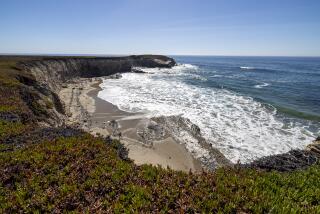The wetlands quagmire
LOS ANGELES AND WASHINGTON — President Obama’s announcement of an ambitious plan to restore Louisiana’s wetlands promises to ensnare the administration in a long-standing political morass over how best to manage the lower Mississippi River.
The size, scope and details of the restoration plan Obama announced Tuesday are still taking shape under the guidance of Navy Secretary and former Mississippi Gov. Ray Mabus, White House spokesman Ben LaBolt said. Obama asked Mabus to assess the gulf needs and complete his restoration plan to address them “as soon as possible,” aides said.
It appears likely that the environmental component of that plan will go far beyond cleaning up beaches and marshlands tainted by spilled oil, to rebuilding and restoring coastal areas that have suffered for decades from erosion, the impacts of hurricanes Katrina and Rita, commercial activities and other ills.
“Beyond compensating the people of the gulf in the short term, it’s also clear we need a long-term plan to restore the unique beauty and bounty of this region,” Obama said in a nationally televised address. “The oil spill represents just the latest blow to a place that has already suffered multiple economic disasters and decades of environmental degradation that has led to disappearing wetlands and habitats.”
White House aides said the environmental restoration effort would be informed by the work of a federal interagency task force on Gulf Coast restoration, which in March released a “Roadmap for Restoring Ecosystem Resiliency and Sustainability” in Louisiana and Mississippi.
The roadmap calls for “bold and decisive action ... to curtail the rate of wetland loss and barrier island erosion in the area” and to restore ecosystems.
Obama is not the first American president to pledge to remake Louisiana’s wetlands. Generations of political figures have been stymied by the complexity of the issue.
The Mississippi River defines the Louisiana coast, which over millennia has deposited the sediments that established the landmass in the river’s drainage. That natural land-building ceased with a succession of levee and dam projects beginning in the 1930s that have channelized the river.
As a result, the Mississippi no longer fans out, dropping sediment that creates new land. Instead, sediment sluices out to the seafloor. An estimated 1.2 million acres of wetlands have been converted to open water since the levee system began.
The “taming” of the river was intended to provide flood control and improve navigation for ships to the port of New Orleans. Few elected officials want to take on powerful interests that benefit from keeping the river’s man-made berms in place. Prominent among those interests are the oil industry, which has benefited from an estimated 10,000 miles of canals that have been cut through south Louisiana’s marshes to allow access for oil and gas vessels.
Gulf states will no doubt put their hands up seeking funding for pet projects, which in addition to wetlands restoration might include shoring up barrier islands and dredging bays and sounds. But many coastal scientists argue that the most effective solution to restoring Louisiana’s wetlands is tackling the jury-rigged plumbing of the Mississippi.
“The single issue that would top any wish list is to change in the way the lower Mississippi River is managed,” said Len Bahr, coastal advisor to five Louisiana governors. “Unless we really come to grips with that, we don’t have a chance [of] saving the coast in the long run. They hope all these little projects will add up to something. They are all little Band-Aids.”
Bahr said every time the issue of river management was broached by scientists, powerful political forces ruled the day.
Obama did not make clear how the effort would be funded or how much it would cost, but it appears likely that the administration will attempt to force BP to foot the bill.
“We must make a commitment to the Gulf Coast that goes beyond responding to the crisis of the moment ... and BP will pay for the impact this spill has had on the region,” the president said.
The oil company has put up $350 million to fund a plan to help shore up Louisiana’s barrier islands with the hope that the narrow sand spits will stop oil slicks from hitting the coast. Some critics of the project, which is championed by Louisiana Gov. Bobby Jindal, say it is a back-door plan to fund coastal restoration that successive state and federal governments have failed to address.
More to Read
Sign up for Essential California
The most important California stories and recommendations in your inbox every morning.
You may occasionally receive promotional content from the Los Angeles Times.










